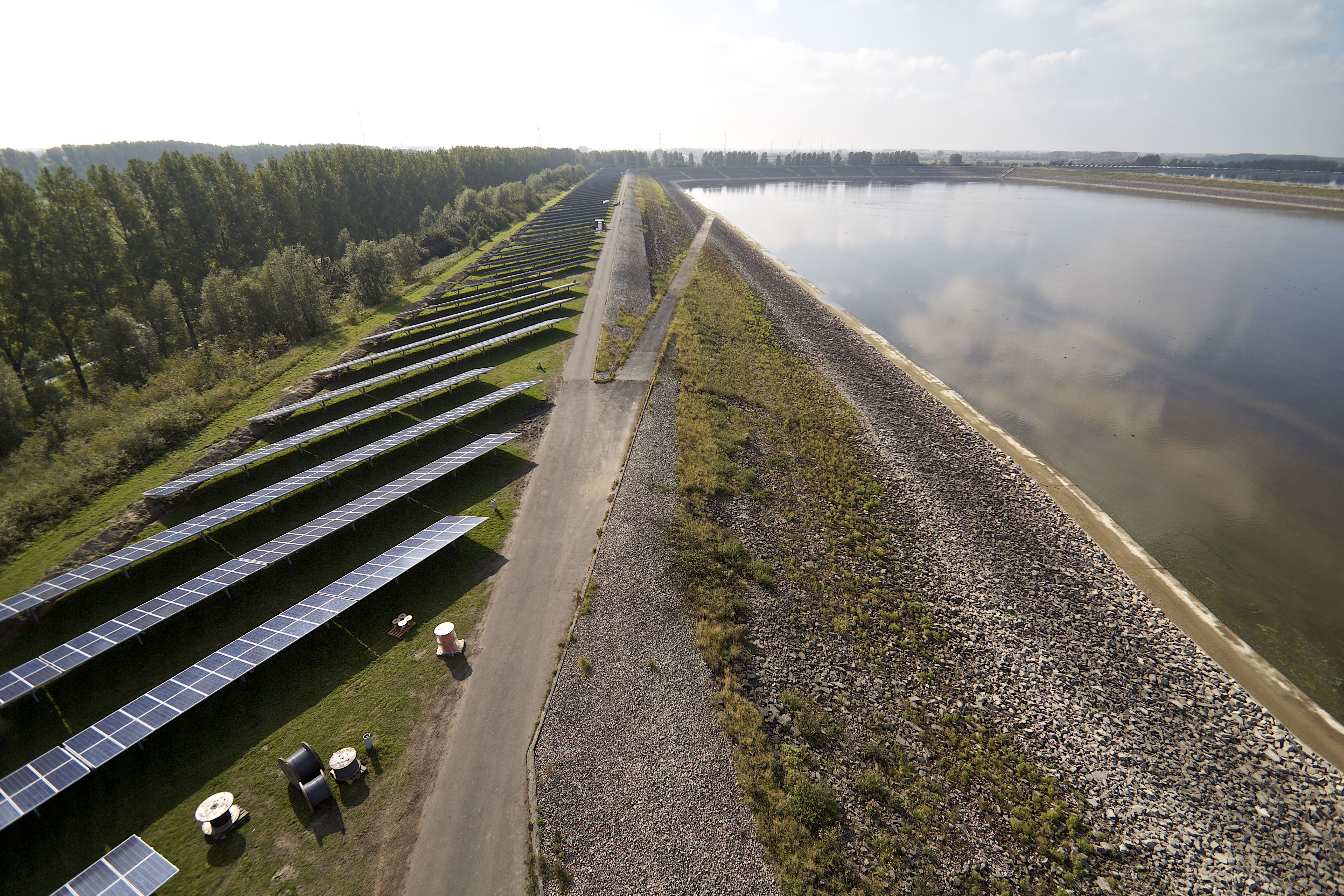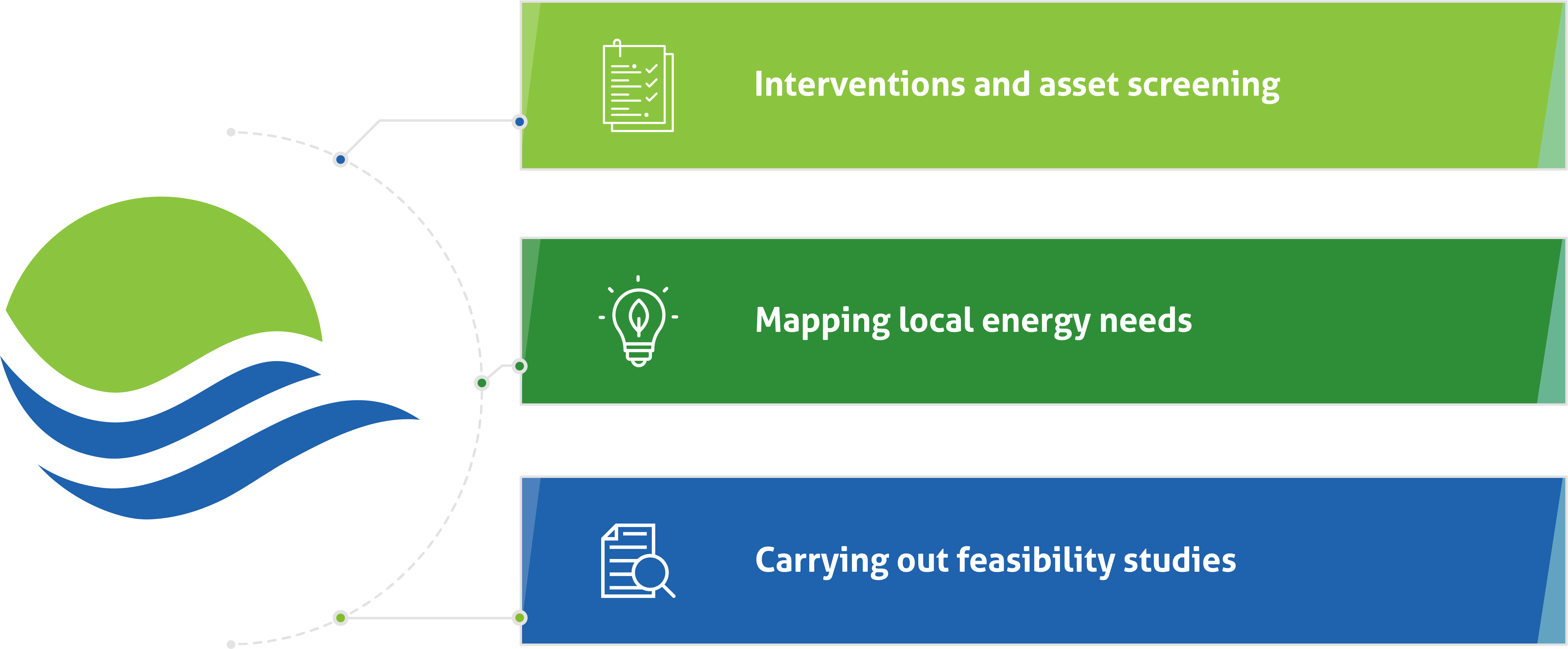Energy-neutral
Energy-neutral business
For several years in a row we have been confronted with periods of prolonged drought in Flanders. As a result, we must use this valuable resource wisely. De Watergroep is also taking a number of measures. Wondering what it is exactly we are doing? Then read on!

Moving toward 100 percent self-generated sustainable energy
De Watergroep is striving to generate enough sustainable energy by 2025 to meet its own energy requirements. Floating solar farms are just one of the things we are working on.

GENERATE OUR OWN ENERGY
De Watergroep is already using 100 percent renewable energy as we speak, but this is largely purchased from France and Scandinavia. “By 2025, we want to generate enough renewable energy to meet our own energy requirements”, Head of Business Development Ortwin Deroo states. “The solar farms at the Kluizen water production centre and on the roof of our water production centre in Haasrode are a step in the right direction, as are the solar panels on the roof of our offices in Brussels. In time, we want to equip our reservoirs at Kluizen and De Blankaart with floating solar panels to make the most of the huge surface area they offer. On sites that use energy locally, we are considering building small or medium-sized wind turbines. In addition, as a water company, we are keen to find out more about water as an energy carrier. By extracting heat from groundwater — or by adding heat to it — we can heat or cool our buildings. By combining drinking water extraction with ground source heat pump technology in this way, we are driving the energy transition process forward.”
TIMING
To ensure no time is wasted in turning De Watergroep’s energy ambitions into concrete action, a tight schedule has been drawn up. A significant amount of work was done in 2019:
- Survey and screening of our assets (buildings, reservoirs, pools, sites, installations etc.) and of the possibilities at each location
- Identification of local energy requirements
- Feasibility studies (technical, economic and in terms of permits)
“Between 2020 and 2030, we will be very busy applying for permits, drawing up implementation plans and completing projects in order to make drastic gains in our sustainable energy production”, Ortwin Deroo says. De Watergroep’s energy goals are based on the sustainable development goals of the United Nations and the climate objectives of the European Union.
600 new hybrid vehicles by 2025
De Watergroep intends to be energy-neutral by 2025, and a greener fleet is one of the options we are pursuing to achieve this goal. We are also encouraging our employees to use multimodal transport.
HYBRID
Over the coming five years, De Watergroep will be replacing around 600 diesel vehicles with hybrid vehicles or other green modes of transport. In 2019, 9 hybrid vehicles were added to the fleet, joining the 9 electric vehicles that were already in use. “When we purchase service vehicles, we look for the lowest possible ecoscore and the highest possible deployability”, Fleet Management team manager Guy De Maesschalck explains. “Electric vehicles are of course greener, but hybrids are generally more deployable, especially when you take into account the rather limited charging infrastructure in Flanders. As a result, we’re striking a balance between the two options.”
MULTIMODAL
Aside from a greener fleet, De Watergroep is pursuing more multimodal solutions. For example, employees could combine a train journey and a service vehicle to travel to their place of work. “Carpooling is another concept that remains underexplored”, according to Guy De Maesschalck. “I’m not just thinking about colleagues carpooling here, but also about carpooling with people living nearby and working around the same area. Platforms such as Taxistop are an ideal tool to achieve solutions of this type.”
